Thinking of some amazing organisms in a sandy beach, the sand bubbler crab always comes in mind. Dotilla clepsydrodactylus, the sand bubbler crab, is the one crab which makes the beaches more beautiful by displaying its marvelous art.
While walking on beaches in Andaman Islands, India, during low tide we can savor the beautiful designs done by these crabs. So, why and how these crabs design like this? The answer is: food!! These crabs have no idea that they are making beautiful designs for us. They are so ignorant that they design pretty well!
.
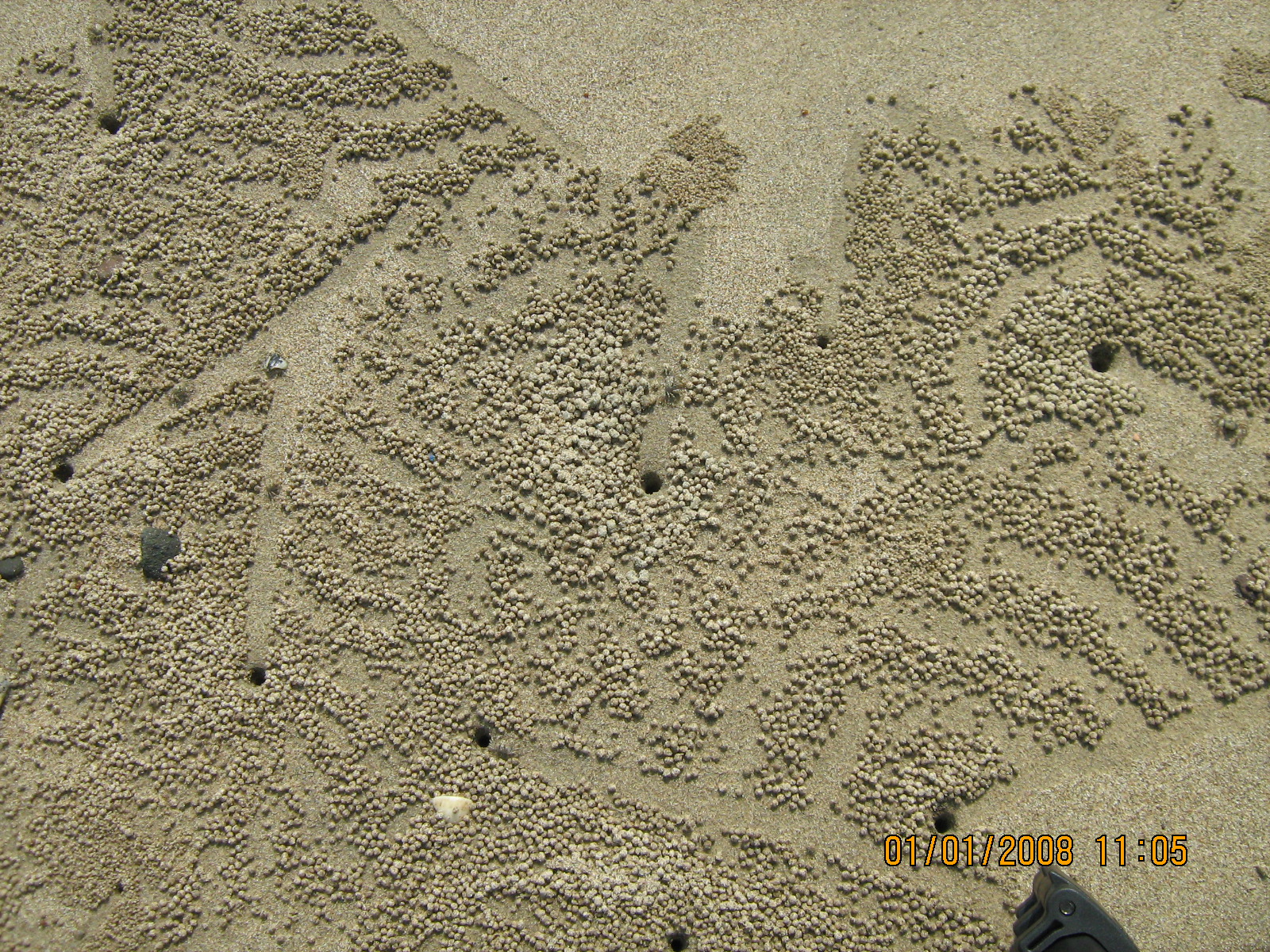
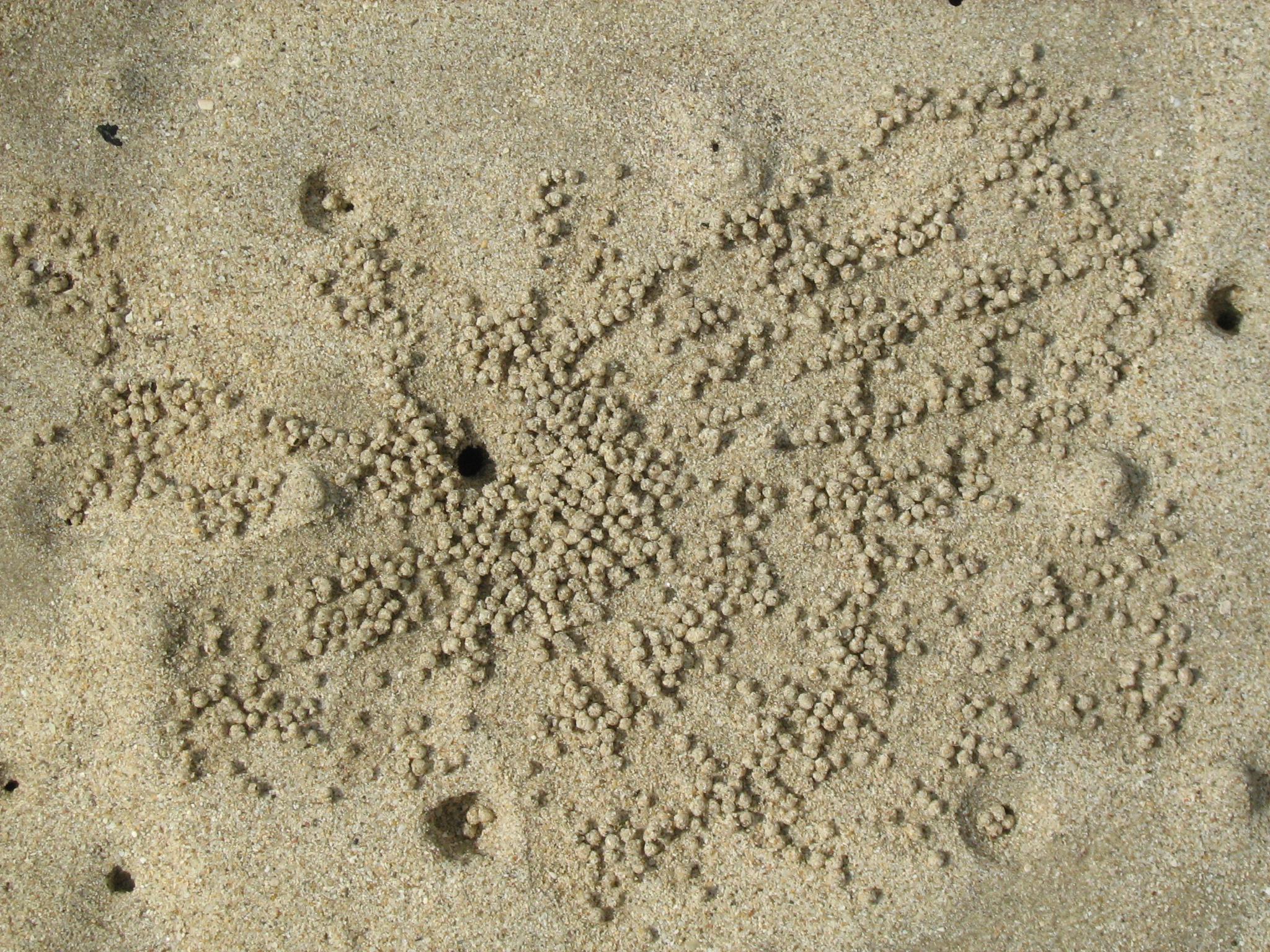
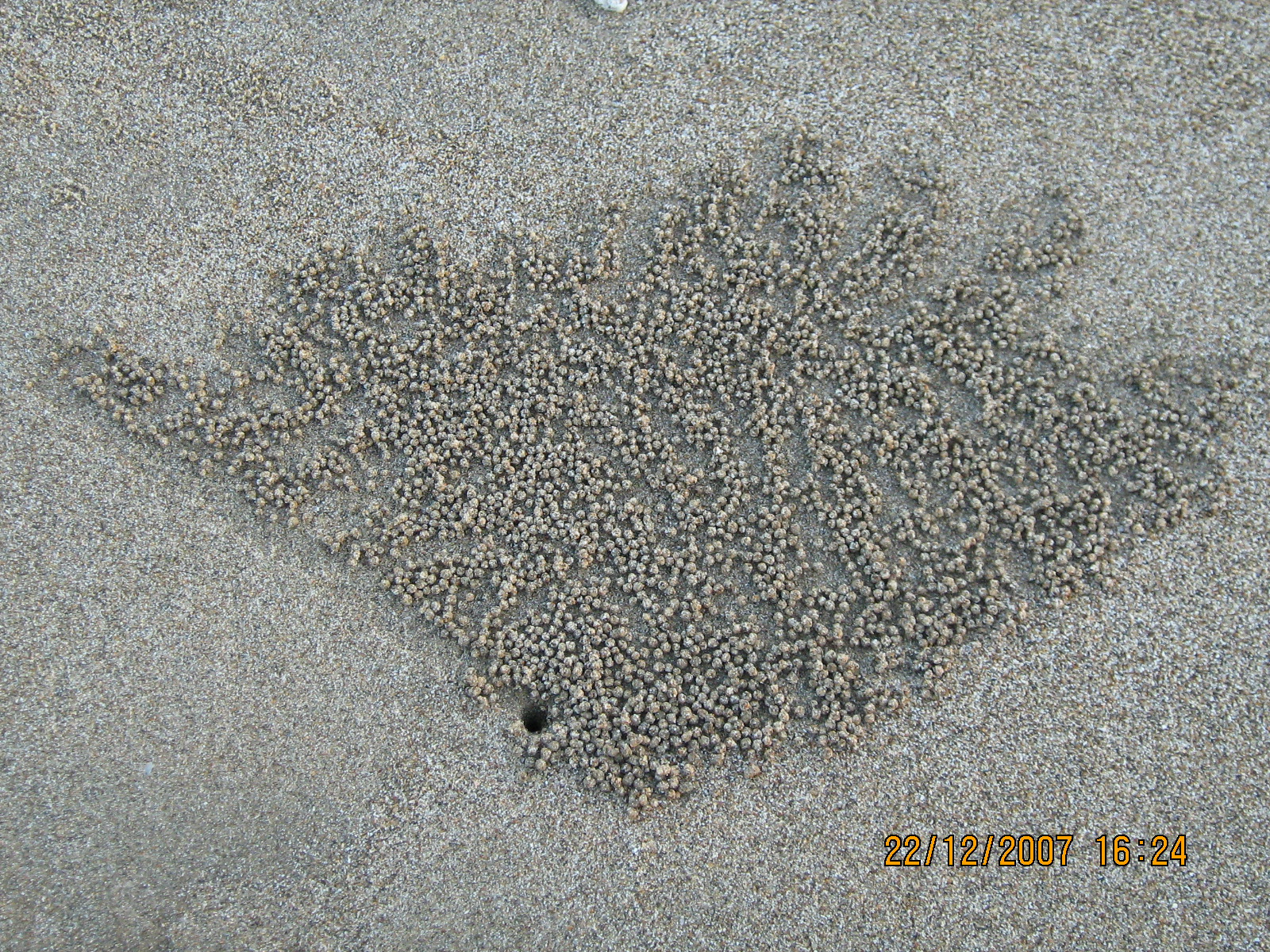
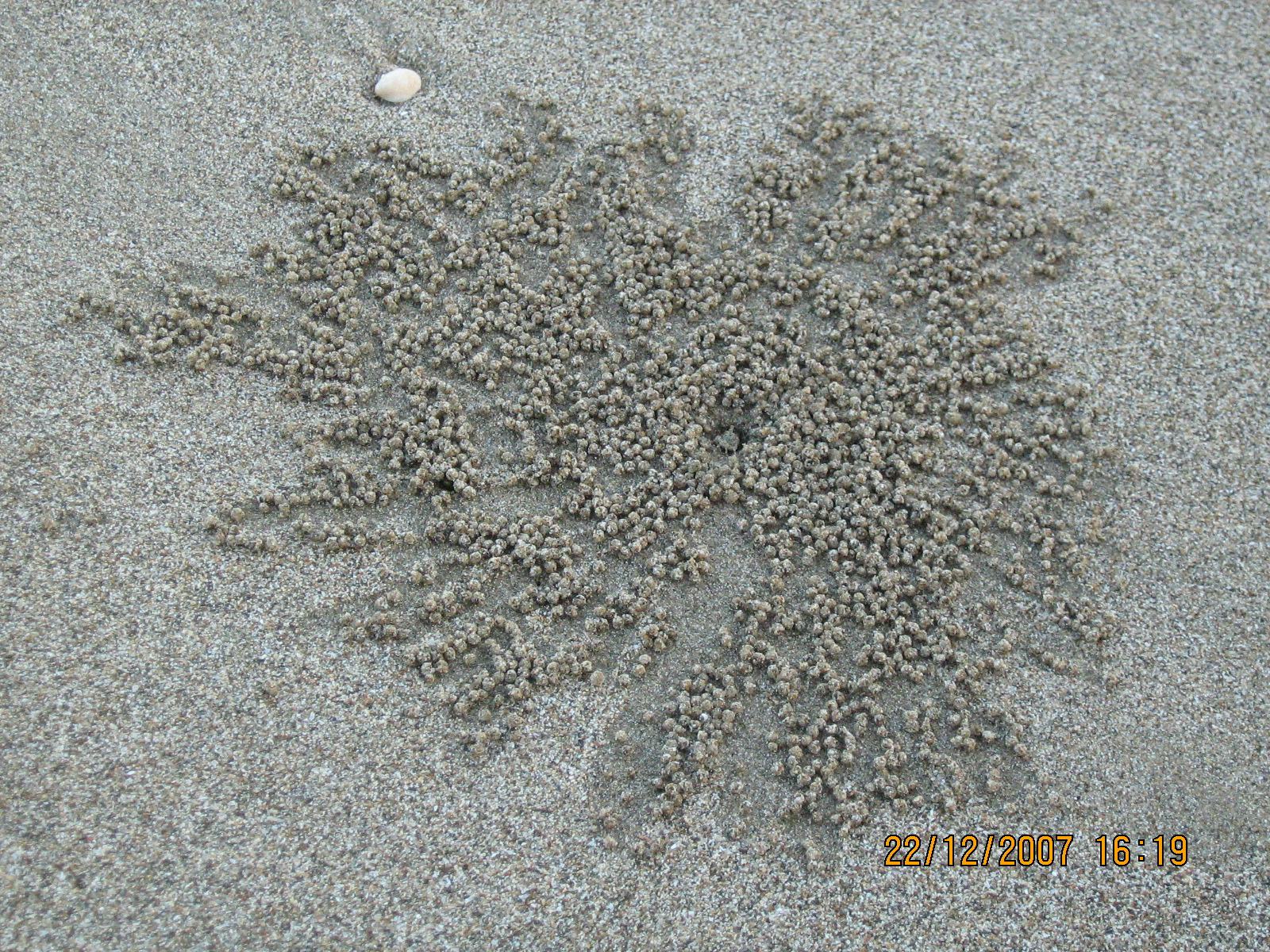
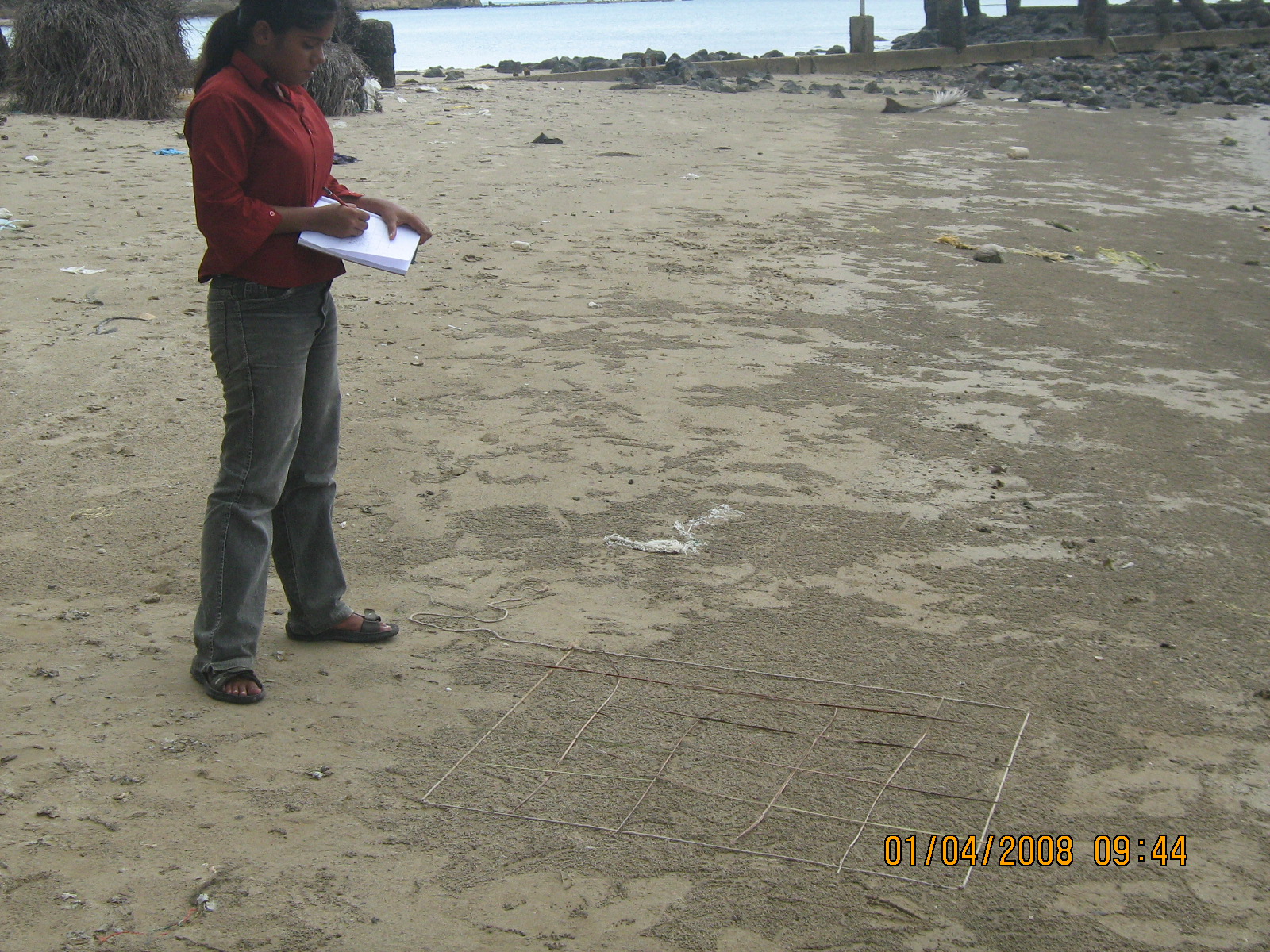
The sand bubbler crab lives in the intertidal zone (area between high and low tides). It surpasses the flooding high tide by constructing a burrow and comes out approximately thirty minutes after the low tide. After coming out of the burrow, it commences to feed by scraping the organic matter sticking to the sand grains in a very systematic manner.
These crabs respect each other's space while feeding in a swarm. They don't disturb any of their neighbors, pretty mannered crabs!!
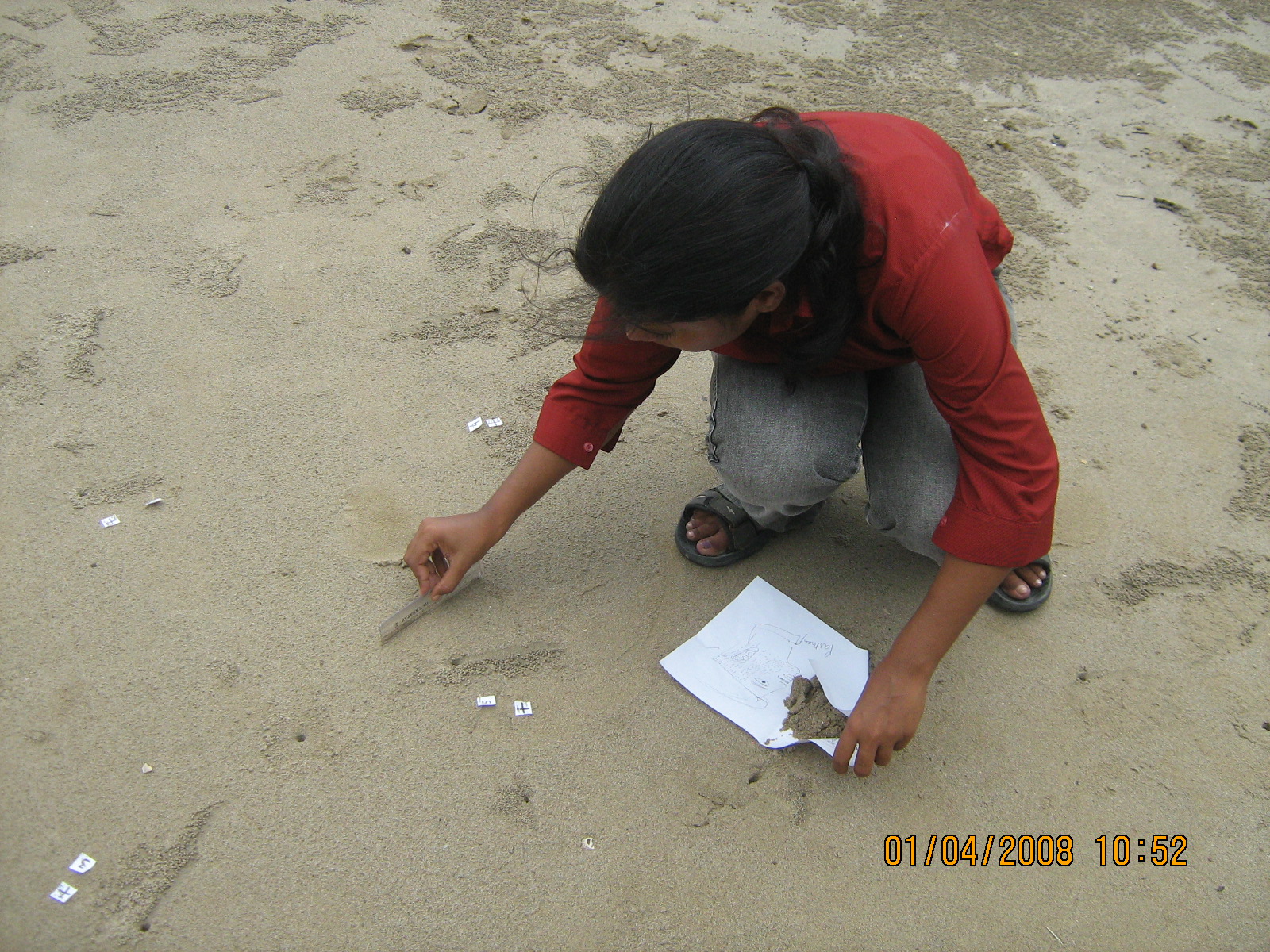 These crabs while feeding remain in the vicinity of their burrows and rarely go too far from it. While feeding they move along the trenches, which are made by them to guide back to their burrows. The pair of an hourglass shaped claws (cheliped) are used to carry sand into their mouth. When sand goes inside the mouth of the crab, it has to pass through three doormats (mouth parts).
These crabs while feeding remain in the vicinity of their burrows and rarely go too far from it. While feeding they move along the trenches, which are made by them to guide back to their burrows. The pair of an hourglass shaped claws (cheliped) are used to carry sand into their mouth. When sand goes inside the mouth of the crab, it has to pass through three doormats (mouth parts). These three doormats (two maxillipeds and one mandibles) brushes all the sand grains away and only real food (dead organic matter) goes into the stomach. Sand grains which are left behind in the mouth is expelled out in the form of round balls of sand (pseudofecal pellets) which the crab leaves carries with its legs and leave behind the fifth leg.
So, this is how the crab makes round sand balls. Click on the link to watch Dotilla expelling sand pellets
Our next and most important curiosity is: why do they make designs? If we look at the area where these crabs feed, it appears like they have decorated the surface of the beach. One must have following qualities to do amazing design on sand:
- Patience
- Swiftness
- Be conserved (mind one's own business)
- Time management
- Love your own home
The sand bubbler crab has got all these qualities to master their piece of art and they feed only over the areas in the proximity of their burrow. It takes 3-4 hours for each crab to feed over the entire area in the vicinity of their burrow. These crab show fidelity to their burrow during the entire feeding time and hide in the same burrow when high tide approaches. (click on the link to watch the video!) Dotilla making beautiful design on sand
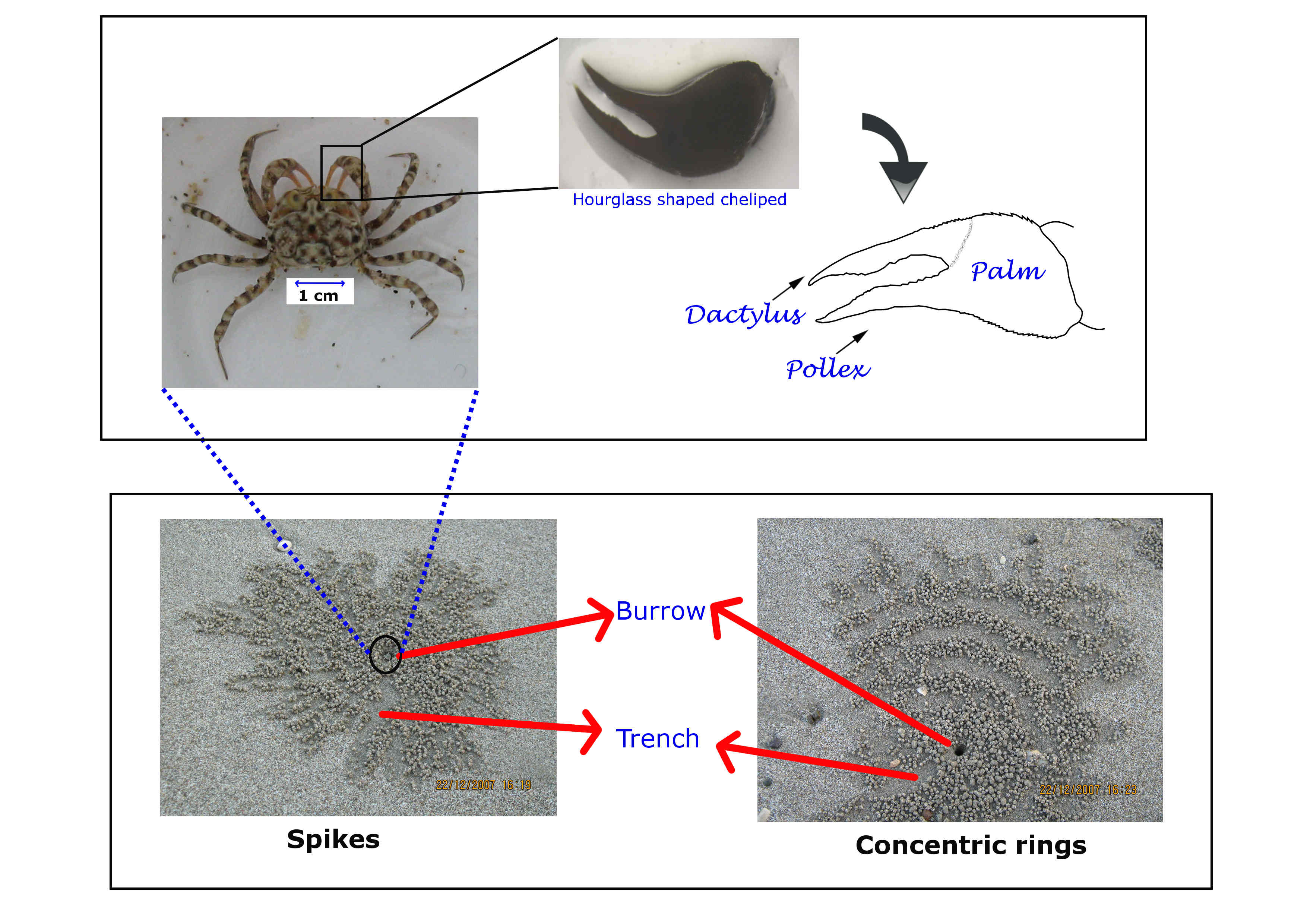
This is how exactly sand bubbler crabs feed and make beautiful design on sand:
- The crab comes out of the burrow thirty minutes after the low tide by sorting the sand grains and deposits the sand pellets on the outskirts of their burrow.
- After coming out they feed on the straight line from the burrow leaving the sand pellets exactly on the line they have already fed, hypothetically just to make sure that they don't feed over the same area again.
- When it finishes sorting sand on straight line, it either goes back towards the burrow and starts feeding in another straight line from burrow or it continues sorting sand from the first straight line towards clockwise/ anti-clockwise direction.
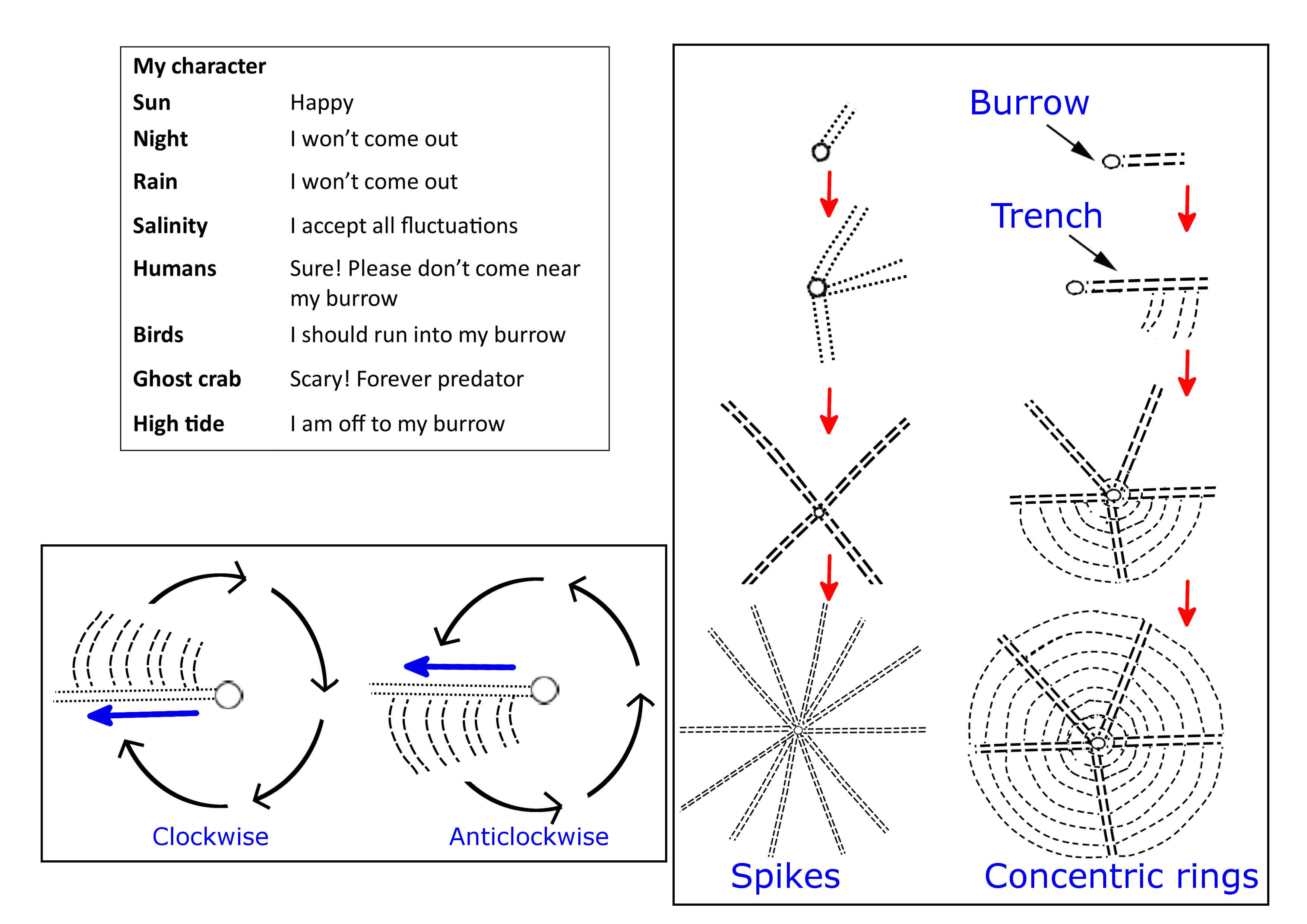
I have come across mainly two types of shapes which the sand bubbler crab prefer to design: spikes and concentric rings. These two shapes might allow the crab to excavate the maximum area near their burrow.
The sand bubbler crab is unique creature which we can observe on beaches during low tide while having a pleasant walk. I wish that it should never stop making designs. Keep designing little guys!!!
P. S. This is a part of my postgraduate dissertation, and I always miss you Dotilla from Andamans.





Comments